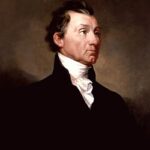The Historic Declaration
President James Monroe delivered his groundbreaking doctrine to Congress on December 2, 1823. This bold foreign policy statement emerged during a critical period in world history. European powers threatened to reclaim their former colonies in Latin America. ⚠️ Monroe’s administration recognized the danger to American security and trade interests.
The Monroe Doctrine’s Core Principles
The doctrine established four fundamental principles for American foreign policy. First, the United States would not interfere in European affairs or existing colonies. Second, European powers must cease colonization efforts in the Western Hemisphere. Third, any European interference would be viewed as hostile acts against America. 📊 These principles reflected growing American confidence and strategic thinking.
Diplomatic Context and Timing
The doctrine emerged from collaboration with British Foreign Secretary George Canning. Britain’s naval power provided crucial backing for Monroe’s bold declaration. Secretary of State John Quincy Adams crafted much of the policy’s language. The timing coincided with independence movements across Latin America. 💰 American merchants stood to benefit from expanded trade opportunities with new republics.
Impact:
Immediate International Consequences
The Monroe Doctrine immediately elevated America’s global standing and diplomatic influence. European powers initially dismissed the declaration but gradually accepted its implications. 🌍 Britain’s informal support gave the policy credible enforcement mechanisms. Latin American republics welcomed American protection against European reconquest attempts. The doctrine established the United States as the hemispheric hegemon.
Long-term Foreign Policy Transformation
The Monroe Doctrine became the foundation of American hemispheric policy for over a century. Subsequent presidents invoked the doctrine to justify territorial expansion and intervention. The Roosevelt Corollary in 1904 expanded the policy’s scope significantly. 🔥 The doctrine influenced major conflicts including the Spanish-American War and Cold War confrontations. It transformed America from an isolated nation into a regional power.
Economic and Strategic Benefits
The policy opened vast new markets for American merchants and manufacturers. Trade with Latin America expanded dramatically throughout the 19th century. 📈 The doctrine prevented European economic dominance in the hemisphere. It protected emerging democracies that shared American republican values. Historians consistently rank this decision among Monroe’s greatest presidential achievements. The doctrine demonstrated how bold diplomacy could achieve national objectives without military conflict.
